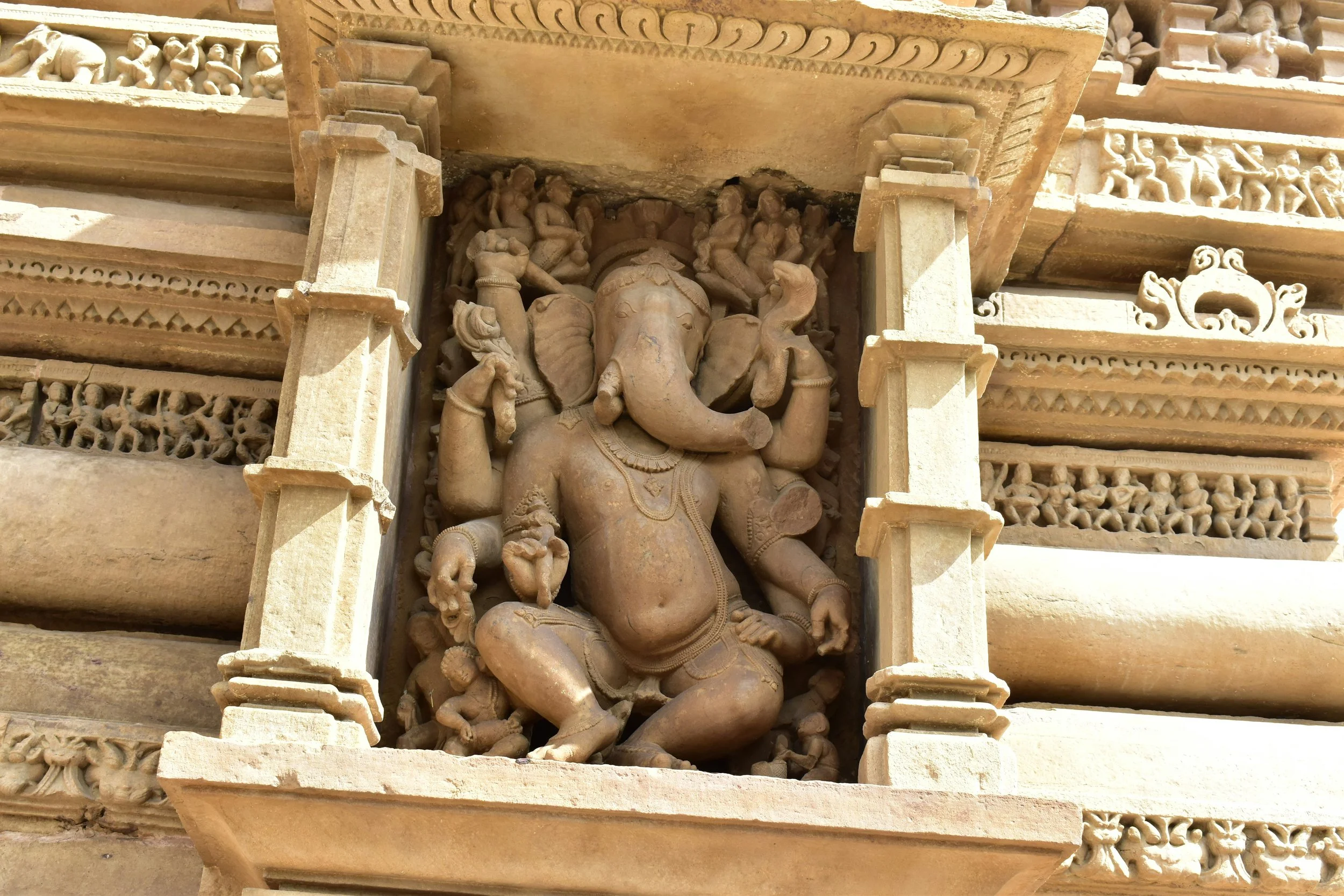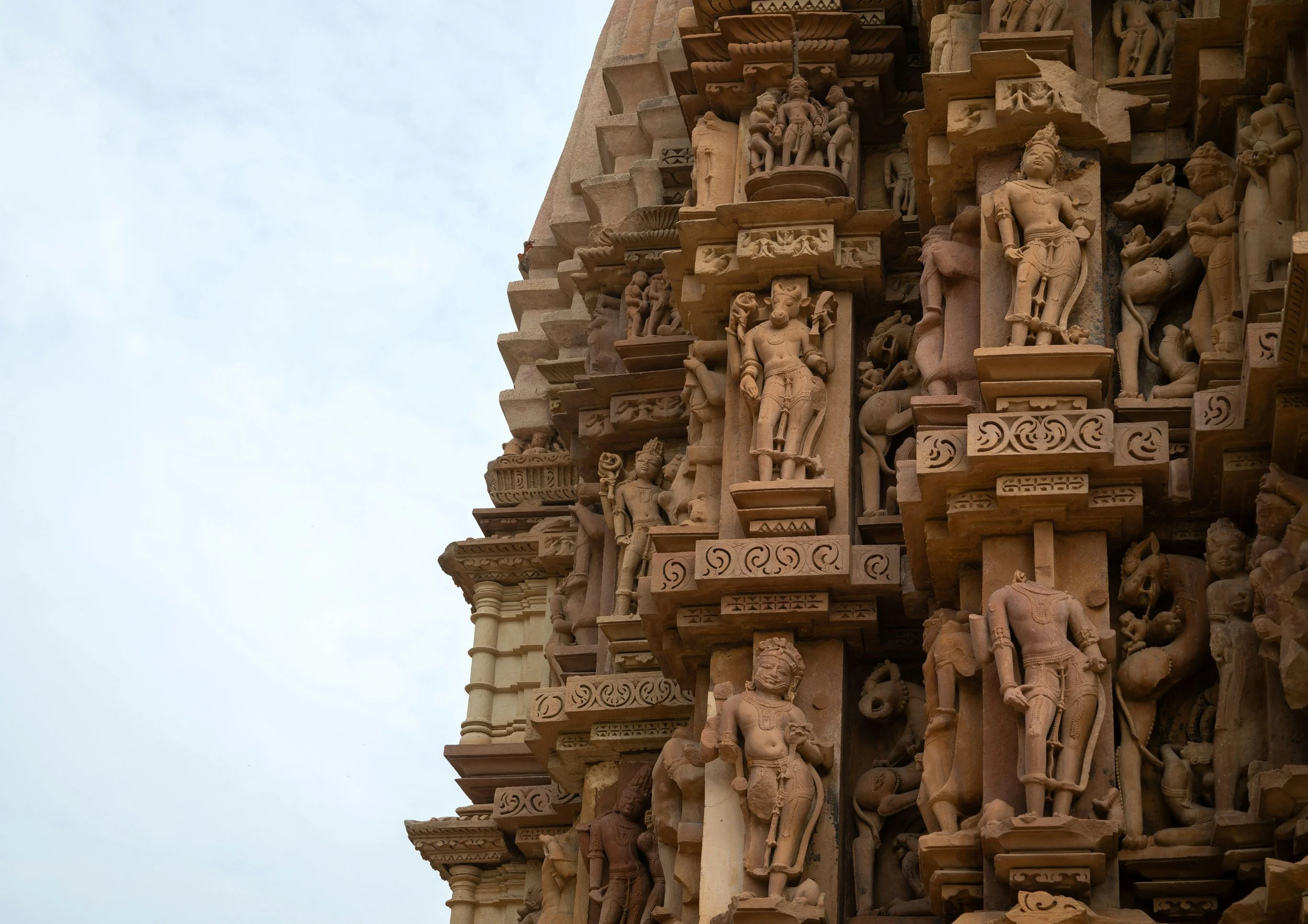Khajuraho Temples: The Symbolism and Architecture of a Stone Legacy
Sitting in the heart of Madhya Pradesh lies one of the world’s most celebrated architectural ensembles and a UNESCO World Heritage site — the Khajuraho Group of Monuments. Built in the period between the 9th and 12th centuries by the Chandela dynasty, these temples are not only architectural masterpieces but also cultural chronicles carved in stone. With their extraordinary artistry, they continue to captivate architects, historians, and travellers from across the globe.
This guide dives into the symbolism, artistry, and unique architectural features of Khajuraho, offering a deeper perspective for enthusiasts of design, history, and culture.
A Brief History of Khajuraho Temples
The temples were constructed during the rule of the Chandela dynasty (circa 950–1050 CE), a time when central India flourished both culturally and politically. Once numbering around 85, only about 20 temples survive today, divided into Western, Eastern, and Southern groups.
Khajuraho’s fame rests on its erotic sculptures, but their significance goes far beyond sensual imagery. The temples illustrate a holistic vision of life — intertwining spirituality, human desire, divine union, and daily existence.
Symbolism in Stone
At the heart of Khajuraho’s design is the philosophy of Tantra — the balance of the material and spiritual worlds. The erotic carvings, often misunderstood, are not indulgent art but metaphors:
Union of Shiva and Shakti – Symbolises cosmic balance and creation.
Sensual imagery on outer walls – Suggests that one must transcend worldly desires before entering the sanctum of divinity.
Celestial beings, musicians, and dancers – Represent the joy and vitality of human life as offerings to the gods.
Architectural Styles and Features
The Khajuraho temples epitomise the Nagara style of temple architecture. This style is known for its curvilinear towers (shikharas) and intricate carvings.
Format: Temples are built on high platforms, symbolising a sacred elevation from the earthly plane.
Shikhara (Spire): Soaring upward, the tower depicts the cosmic mountain Meru, also considered the axis of the universe.
Mandapas (Halls): The pillared halls, carved heavily with intricate designs, lead to the garbhagriha (sanctum).
Carvings: Nearly every inch of the walls, ceilings, and pillars is covered in sculptures — gods, apsaras, mythical animals, warriors, and lovers.
Notable Temples and Carvings to Observe
1. Kandariya Mahadeva Temple
The largest and most ornate temple.
Dedicated to Shiva, its spire rises about 30 meters.
Look for its erotic sculptures blending with images of divinity and everyday life.
2. Lakshmana Temple
One of the earliest and most preserved temples.
Dedicated to Vishnu.
Famous for its friezes depicting scenes of courtly life, battles, and love.
3. Vishvanatha Temple
Notable for its sculptural balance — from deities to celestial musicians.
Elephants carved at the base symbolise strength and guardianship.
4. Chitragupta Temple
Dedicated to Surya, the Sun God.
Features a magnificent 2.1-meter statue of Surya driving a chariot of seven horses.
5. Parsvanath Temple (Eastern Group)
A Jain temple renowned for the exquisite detailing of celestial beings and nymphs.
Cultural Significance
Khajuraho’s temples reflect a society that embraced the wholeness of life — spirituality interwoven with art, sensuality, music, and community. They remind us that Indian art traditions were not confined to asceticism but celebrated life in its entirety.
In today’s context, Khajuraho stands as a testimony to India’s architectural ingenuity, inclusive worldview, and artistic brilliance.
How to Plan Your Visit
Ideal Time to Visit: October to March, when the weather is pleasant.
Khajuraho Dance Festival: Make sure to attend this week-long festival held annually in February. It showcases India’s classical dance forms against the backdrop of the temples.
Guided Tours: Hire a knowledgeable guide to decode the symbolism hidden in carvings.
Nearby Attractions: Panna National Park (tiger reserve) and Raneh Falls (famous for its canyon).
Why Khajuraho is Unique
Unprecedented from any other temple complex in the world, Khajuraho presents life carved in stone — not just divine worship but also the human journey. Its intricate detailing, symbolic layers, and architectural mastery make it a must-visit for anyone passionate about history, art, or design.






